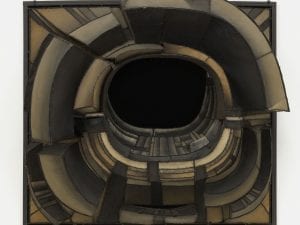A whole century after first revealing his work to America at the New York Armory Show in 1913 to a great ruckus, the art of the unofficial torchbearer of modernism, Constantin Brancusi, is celebrated in a new exhibition at the Paul Kasmin Gallery, running until 11 January. Presenting five key works that helped solidify Brancusi’s reputation, the show aims to make a great celebration of the Romanian-born artist and his lasting influence on the art world and the city of New York.
First dubbed “freak art” for its explicit sensuality by the Chicago Daily Tribune when his original five sculptures appeared, Bracusi’s work went on to leave an indelible mark that directed modern sculpture on a radical new path. Fast forward 100 years and his work is still relevant and the bronze sculptures displayed in the Paul Kasmin speak volumes about this remarkable artist. His controversial works – such as the hotly debated Bird in Space and ambitious dreams – forever make him a great talking point of Manhattan art scene.
Among the pieces in this recent exhibition is the polished bronze Head (c.1920) which explores the totemic nature of masks, by aiming to draw on, reject and then reinvent the history of sculpture with a geometrically abstract design. Meanwhile, Mademoiselle Pogany II (1925), creates a plaster model of the version first exhibited at the Armory Show in 1913, seeking to capture the inexpressible feminine spirit. Sleeping Muse II (1923) similarly depicts the abstracted face of a woman with a subdued look to beckon the viewer in to watch over the delicate sleeping woman.
Then in his most radically abstract structure, Newborn (1920), Brancusi represents the act of birth and the newborn child. Previously named Beginning of the World and referencing the violence with which human life begins, it was then tempered to a smoother, more serene depiction of a child’s beginnings.
The final work of the five diverts pointedly from this subject matter, plunging into Brancusi’s first moving artwork, Fish (1926). Born out of a goal to capture a creature’s movement, the bronze sculpture rotates on a disc that sees the work take on the life of the subject, darting around surrounded by light reflected as if water.
All testifying to his signature style admired by the New Yorkers since 1913, this collection exemplifies the sophisticated expression of simplicity and abstraction that made his name and work shine continually through the decades.
Brancusi in New York 1913-2013 until 11 January, Paul Kasmin Gallery, 515 West 27th Street, New York.
Credits
1. Constantin Brancusi, Mademoiselle Pogany II, 1925-2006, polished bronze, 16 7/8 x 7 x 11 3/4 inches, 42.9 x 17.8 x 29.8 cm, Edition of 8, PK 17573.





